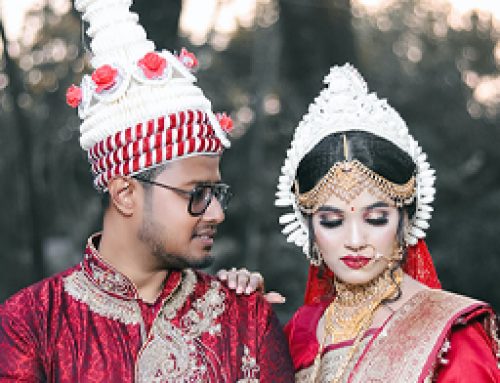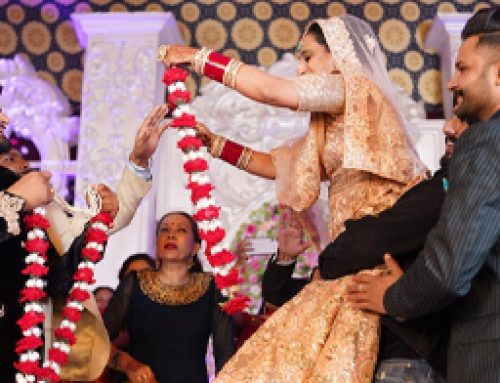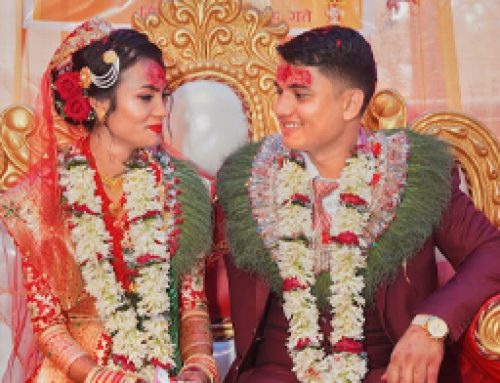South Indian Cultural Wedding
South Indian weddings are rich in culture, tradition, and vibrant celebrations. They vary in customs and rituals depending on the specific region and community. Let’s explore the key elements and rituals that are typically observed in a traditional South Indian wedding:

Pre-Wedding Rituals:
-
Panda Kaal Muhurtham:
This is an auspicious ritual where the bride’s and groom’s families perform prayers to invoke the blessings of the ancestors. It is believed to bring good fortune and ensure a successful wedding.
In South Indian culture, weddings are rich in customs and rituals that reflect the region’s cultural heritage. One of the significant rituals in a South Indian wedding is the Panda Kaal Muhurtham. This ritual holds great importance as it marks the auspicious time for the wedding ceremony to begin. Let’s delve into the details of this tradition:
-
Significance of Panda Kaal Muhurtham:
Panda Kaal Muhurtham is a time-specific ritual that determines the auspicious moment to commence the wedding ceremony. The term “Panda Kaal” translates to “auspicious time” or “moment of purity,” while “Muhurtham” refers to an auspicious period.
Selecting the right Panda Kaal Muhurtham is considered crucial as it is believed to bring good fortune, prosperity, and marital bliss to the couple. The priest or an astrologer calculates the auspicious time based on the positions of celestial bodies and astrological factors.
-
Rituals and Customs:
The Panda Kaal Muhurtham ceremony involves several customs and rituals that are observed with great reverence. Here are the key elements:
- Astrological Consultation: Prior to the wedding day, the families consult an astrologer to determine the most auspicious time for the wedding. The astrologer considers factors such as the birth charts of the bride and groom, planetary positions, and other astrological considerations to identify the Panda Kaal Muhurtham.
- Announcements: Once the Panda Kaal Muhurtham is determined, the families inform their relatives, close friends, and the wedding guests about the exact time for the wedding ceremony. This ensures that everyone is present and ready to participate in the auspicious occasion.
- Ritual Preparation: On the wedding day, the venue is adorned with decorative elements, flowers, and traditional motifs to create an ambiance of sanctity and beauty. The area where the wedding rituals will take place is beautifully decorated, often with banana leaves, flowers, and rangoli (colorful patterns made with colored powders).
- Commencement of the Ceremony: At the designated Panda Kaal Muhurtham time, the wedding ceremony begins. The priest officiates the rituals and guides the couple through various customs and vows.
The Panda Kaal Muhurtham ceremony in a South Indian wedding sets the tone for the auspicious beginning
-
-
Nischayathartham:
This is the formal engagement ceremony where the families exchange gifts, including clothes, jewelry, and fruits. The couple exchanges rings, symbolizing their commitment to each other.
In South Indian cultural weddings, various rituals and ceremonies are followed, each holding significant importance. One such ceremony is Nischayathartham, which is the formal engagement ceremony. Let’s explore the details of this ceremony and the broader context of South Indian weddings:
-
South Indian Cultural Weddings:
South Indian weddings are known for their rich traditions, vibrant rituals, and elaborate ceremonies. They are typically rooted in Hindu customs and are celebrated with great enthusiasm and pomp. These weddings are characterized by their unique customs, attire, and delectable cuisine.
-
Nischayathartham – The Engagement Ceremony:
Nischayathartham, also known as the formal engagement ceremony or Nischaya Tamboolam, is a significant pre-wedding ritual in South Indian weddings. It is the official announcement of the couple’s intention to marry and involves the exchange of promises and vows.
-
Timing and Venue:
Nischayathartham usually takes place a few months before the wedding. The venue can be the bride’s or groom’s home, a temple, or a banquet hall. The ceremony is attended by close family members and friends from both sides.
-
Rituals and Customs:
The Nischayathartham ceremony involves several customs and rituals that differ based on regional and family traditions. Here are some common elements:
- Exchange of Promises: The ceremony begins with the exchange of vows and promises between the bride and groom. They express their commitment to each other and their intent to marry. This exchange signifies the formal engagement and sets the foundation for the upcoming wedding.
- Exchange of Rings: The couple exchanges engagement rings as a symbol of their commitment and love. The rings are usually placed on the bride’s ring finger during the ceremony. This ritual is witnessed by family members and close friends, who offer their blessings and support.
- Exchange of Gifts: Both families exchange gifts as a token of love and acceptance. The bride’s family presents traditional items, jewelry, clothing, and other meaningful gifts to the groom and his family, and vice versa. This exchange strengthens the bond between the families and signifies their agreement and blessings for the upcoming wedding.
- Blessings and Prayers: A priest or elder family member performs religious prayers and blessings to invoke the deities’ blessings and seek divine guidance for the couple’s journey towards marriage. These prayers are meant to ensure a harmonious and prosperous union.
-
Attire and Decorations:
For the Nischayathartham ceremony, the couple usually dresses in traditional South Indian attire. The bride wears a saree or a pattu pavadai (traditional silk skirt and blouse), often in vibrant colors and adorned with intricate jewelry and accessories. The groom typically wears a dhoti and kurta, complemented by traditional jewelry.
The venue is decorated with flowers, banana leaves, and traditional motifs to create an auspicious and festive ambiance. The decor often reflects the couple’s preferred color scheme or traditional patterns.
-
Celebration and Feasting:
After the engagement ceremony, a small celebration takes place where guests are treated to a sumptuous feast. South Indian cuisine, known for its flavors and variety, is served on banana leaves, adding to the traditional charm of the event. The celebration includes music, dance performances, and cultural activities to entertain and engage the guests.
Nischayathartham is a significant milestone in the journey towards marriage in South Indian weddings. It marks the formal engagement of the couple and is a precursor to the elaborate wedding ceremonies that follow. This ceremony serves as an occasion for families to come together, exchange vows and blessings, and celebrate the couple’s union. It represents the beginning of a beautiful journey towards a lifelong partnership.
-
-
Mehndi Ceremony:
Similar to North Indian weddings, South Indian weddings also have a mehndi ceremony where the bride’s hands and feet are adorned with intricate henna designs.
In South Indian cultural weddings, the Mehndi ceremony, also known as the Mehendi or Pelli Kuthuru, holds a special place. Although the Mehndi ceremony is more commonly associated with North Indian weddings, it is also celebrated with its unique customs and traditions in South Indian weddings. Let’s explore the Mehndi ceremony in detail within the context of South Indian cultural weddings:
-
Significance of the Mehndi Ceremony:
The Mehndi ceremony is an auspicious pre-wedding ritual that involves the application of henna designs on the hands and feet of the bride. Mehndi is considered a symbol of good luck, beauty, and prosperity in Indian culture. The ceremony is a time for the bride to relax, enjoy the process, and be adorned with intricate henna patterns.
-
Timing and Venue:
The Mehndi ceremony usually takes place a day or two before the wedding. It is primarily held at the bride’s house or at a venue arranged by her family. The event is a women-centric affair, where the bride, her female relatives, and close friends come together to celebrate and partake in the Mehndi application process.
-
Mehndi Application Process:
The Mehndi ceremony begins with the application of henna paste on the bride’s hands and feet. A skilled Mehndi artist or a family member specializing in henna art takes charge of this task. Intricate patterns are created, incorporating traditional motifs, floral designs, and sometimes personalized elements that hold significance for the bride and groom.
The application of Mehndi is a time-consuming process, and it can take several hours to complete, depending on the complexity of the design and the bride’s preferences. During this time, the bride is often seated on a decorated stage or designated area, surrounded by her female relatives and friends who engage in cheerful conversation, singing, and dancing.
-
Customs and Traditions:
The Mehndi ceremony in South Indian weddings also includes certain customs and traditions that make it unique:
- Oil Application: Before the Mehndi application, the bride’s body is traditionally oiled. This is done to cleanse and prepare her skin for the henna, as well as to enhance its color and longevity.
- Music and Dance: Music and dance play a significant role in the Mehndi ceremony. Female relatives and friends gather to sing traditional wedding songs, called Sangeet or Nalangu, while the bride’s Mehndi is being applied. They often engage in folk dances, such as the Kollatam or Kummi, creating a festive and joyous atmosphere.
- Mehndi for Guests: In South Indian Mehndi ceremonies, it is common for the guests, especially close female relatives and friends, to also have Mehndi applied on their hands as a form of celebration and participation.
- Ritualistic Elements: Some families incorporate ritualistic elements into the Mehndi ceremony, such as the lighting of lamps, offering prayers, and seeking blessings for the bride’s well-being and a harmonious married life.
-
Post-Mehndi Celebrations:
After the Mehndi application, the bride is advised to let the henna dry naturally to achieve a rich and dark stain. The longer the henna remains on the skin, the darker the color it will develop. During this time, the bride is often pampered with gifts, blessings, and heartfelt wishes from her family members and friends.
-
Symbolism and Beliefs:
In South Indian weddings, it is believed that the darkness of the Mehndi color signifies the strength of the bride’s love and bond with her future spouse. The Mehndi stain is also said to bring good luck and ward off evil spirits.
The Mehndi ceremony in South Indian cultural weddings is a delightful and intimate occasion that celebrates the beauty, artistry, and symbolism of Mehndi. It provides a special time for the bride to relax, bond with her female relatives and friends, and prepare herself physically and emotionally for the upcoming wedding. The ceremony is a fusion of customs, traditions, and joyful celebrations, making it an integral part of South Indian wedding festivities.
-
-
Wedding Day Rituals:
- Ganesh Puja: The wedding day begins with a prayer to Lord Ganesha, the remover of obstacles. The bride’s family performs this puja at their home, seeking blessings for a smooth and successful wedding ceremony.
- Kashi Yatra: In this playful ritual, the groom pretends to leave for Kashi (Varanasi) as a symbol of renunciation. The bride’s brother then persuades him to return and get married.
- Maalai Maatral: The bride and groom exchange garlands as a sign of acceptance and respect for each other. This ritual signifies their willingness to unite in marriage.
- Oonjal: The couple is seated on a swing decorated with flowers. Female relatives take turns gently swinging the swing, symbolizing their support and encouragement for the couple’s married life.
- Kanyadaan: The bride’s father gives her away to the groom, signifying the formal transfer of responsibility and guardianship. This ritual is considered highly significant and emotional.
- Mangalsutra and Saptapadi: The groom ties a sacred thread, the mangalsutra, around the bride’s neck, symbolizing their marital bond. The couple then takes seven steps together, known as Saptapadi, representing their shared journey through life’s seven essential vows.
- Tying the Thali: In South Indian weddings, a sacred thread called the thali or mangalyam is tied around the bride’s neck by the groom. It is a symbol of her married status and is considered highly auspicious.
- Mangala Snaanam: The newly married couple takes a ceremonial bath together, considered purifying and symbolizing their readiness to start their married life.
Post-Wedding Rituals:
- Reception: After the wedding ceremony, a reception is held where family and friends gather to celebrate and congratulate the newlyweds. There is music, dance, and feasting as everyone joins in the festivities.
- Grihapravesh: The bride is welcomed into her new home by performing various rituals, including stepping into a plate filled with rice, signifying prosperity and abundance.
- Sammandhi Mariyathai: The families of the bride and groom exchange gifts and show respect and gratitude to each other.
South Indian weddings are known for their colorful attire, with the bride usually wearing a traditional silk saree adorned with exquisite jewelry. The groom is dressed in a dhoti and kurta or a traditional sherwani.
These are just a few glimpses of the rich traditions and customs that are part of South Indian weddings. Each community and region within South India may have specific variations and rituals that add to the uniqueness and beauty of these weddings.
Seasons5 offers a vibrant atmosphere and venues along with our dedicated staff to help you on your big day. Nestled in the lush greenery of Point Cook, we’ve got luxurious accommodations too. Our private lake and waterfall make for a picturesque scene for wedding photos. Crafted with local and fresh ingredients, our Cinnamon Bay Restaurant offers delicious meals for wedding celebrations. You can also enjoy our day spa to relax and rejuvenate. Feel free to call us on 038376 5300 or drop an email at contact@seasons5.com for more information.








